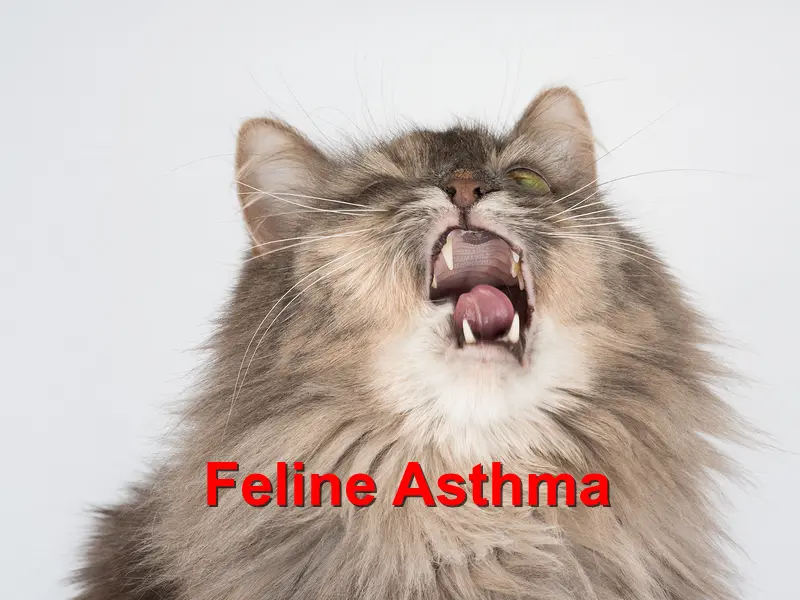What was once considered a rare congenital condition is increasingly becoming rampant with new cases of feline asthma being reported every year. Although it is still debatable, many researchers and clinicians agree that it is caused by a combination of factors including exposure to allergens that can trigger an antigen-antibody reaction in the immune system of a cat.
How Exactly Does it Occur?
What a susceptible kitty is exposed to allergens ( mostly through inhalation ), their immune system reacts by releasing a foray of antibodies to combat the ‘antigen’. This will then gravitate into a series of events that will end with the abnormal proliferation of immune cells in the lower airways of the cat’s lungs. This will, in turn, result in excessive swelling, irritation, an unprecedented constriction of the lungs and general inflammation. As a result, the combination of this kind of unfolding will gradually limit the free movement of air in the respiratory system of the cat.
How to Recognize a Feline Asthma Emergency
Wheezing, difficulty in breathing, hacking, excessive coughing, unexplained vomiting, rapid breathing accompanied by lethargy are all signs and symptoms that your feline is suffering from asthma. And it is possible for these signs to vary/fluctuate in intensity – often swinging from chronic attacks to low-grade sneezing/coughing. What’s more, sometimes these symptoms could be triggered by simply pressing or tapping lightly on the animal’s throat area. Lastly, in the event of an asthma attack, most cats will lower their bodies close to the ground while stretching their neck out in a characteristic ‘pounce’ posture.
What to do in the Event of a Feline Asthma Emergency
Truth be told, there’s a glaring lack of a specific, single and conclusive test that can accurately diagnose feline asthma. Instead, pet vets will often embark on a series of testing and information gathering to arrive at a plausible diagnosis. This includes the likes of an animal’s health history, results of CT scans, X-ray radiography, bronchoscopy, allergy testing, and cytology.
The Treatment
To treat/manage feline asthma, it is common for animal health experts to prescribe a series of corticosteroids that are aimed at reducing the intensity of the lungs’ inflammation. And although these corticosteroids may be administered alone, it’s a common practice to pair them up with bronchodilators to treat the cat’s airway inflammation. And although it is not possible to truly cure cats of asthma, pet owners can help their beloved asthmatic kitties to lead an almost normal life by monitoring their respiratory behavior closely and administering medication promptly in case of flare-ups.
SOURCES: Cornell University, Fritz The Brave, Vet Small Talk




